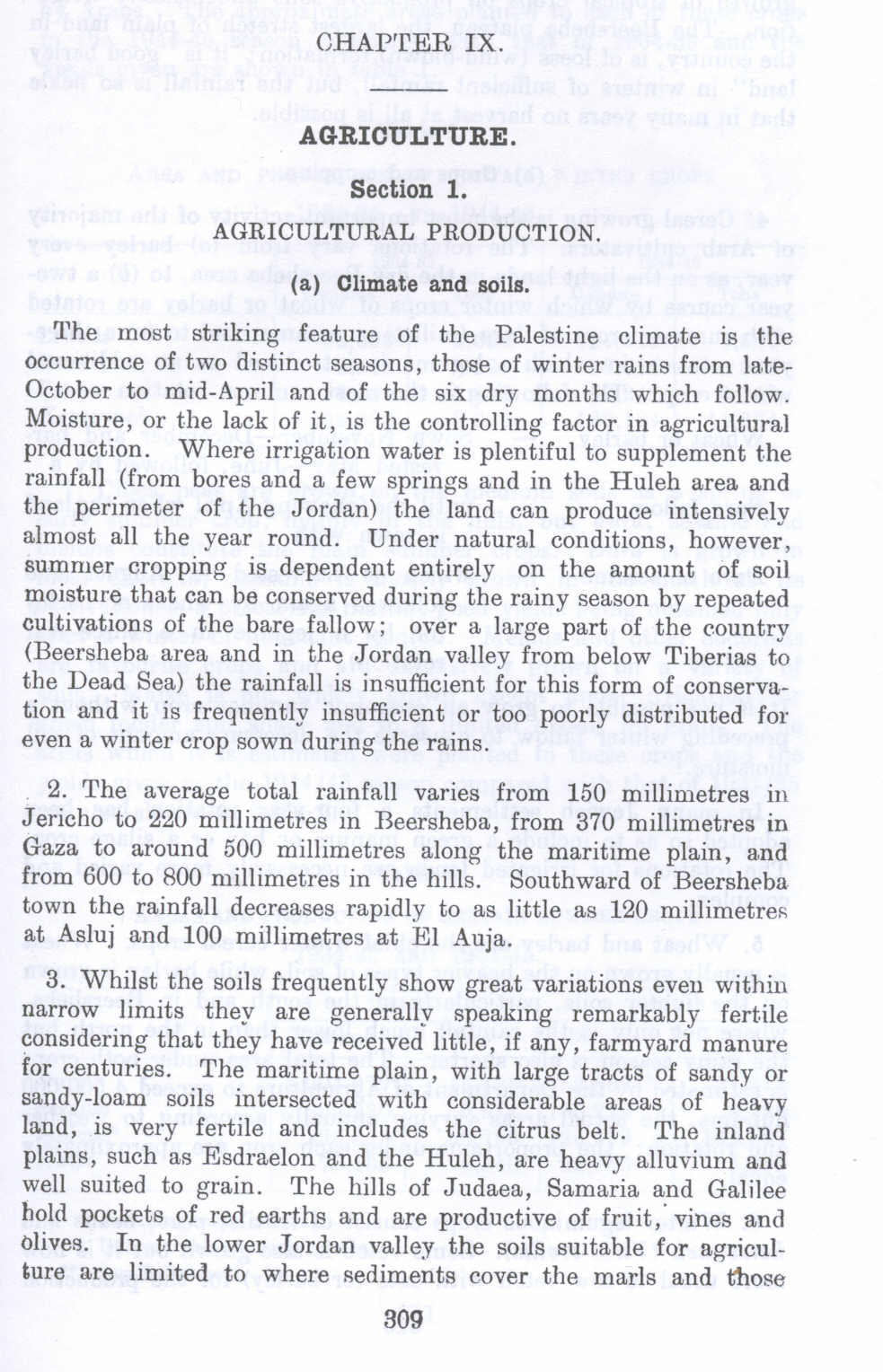| Prev | Next |  |
| Prev | Next |
| PalestineRemembered | About Us | Oral History | العربية | |
| Pictures | Zionist FAQs | Haavara | Maps | |
| Search |
| Camps |
| Districts |
| Acre |
| Baysan |
| Beersheba |
| Bethlehem |
| Gaza |
| Haifa |
| Hebron |
| Jaffa |
| Jericho |
| Jerusalem |
| Jinin |
| Nablus |
| Nazareth |
| Ramallah |
| al-Ramla |
| Safad |
| Tiberias |
| Tulkarm |
| Donate |
| Contact |
| Profile |
| Videos |
Agriculture Production in Palestine before 1948 (Nakba): (a) Climate and Soils (b) Crops and Cropping, British Mandate: A Survey of Palestine: Volume I - Page 309. Chapter IX: Agriculture: Section 1 |
Disclaimer
The above documents, article, interviews, movies, podcasts, or stories reflects solely the research and opinions of its authors. PalestineRemembered.com makes its best effort to validate its contents.


Post Your Comment
*It should be NOTED that your email address won't be shared, and all communications between members will be routed via the website's mail server.
AGRICULTURE.
Section 1.
AGRICULTURAL PRODUCTION.
(a) Climate and soils.
The most striking feature of the Palestine climate is the occurrence of two distinct seasons, those of winter rains from late October to mid-April and of the six dry months which follow. Moisture, or the lack of it, is the controlling factor in agricultural production. Where irrigation water is plentiful to supplement the rainfall (from bores and a few springs and in the Huleh area and the perimeter of the Jordan) the land can produce intensively almost all the year round. Under natural conditions, however, summer cropping is dependent entirely on the amount of soil moisture that can be conserved during the rainy season by repeated cultivation of the bare fallow; over a large part of the country (Beersheba area and in the Jordan valley from below Tiberias to the Dead Sea) the rainfall is insufficient for this form of conservation and it is frequently insufficient or too poorly distributed for even a winter crop sown during the rains.
2. The average total rainfall varies from 150 millimetres in Jericho to 220 millimetres in Beersheba, from 370 millimetres in Gaza to around 500 millimetres along the maritime plain, and from 600 to 800 millimetres in the hills. Southward of Beersheba town the rainfall decreases rapidly to as little as 120 millimetres at Asluj and 100 millimetres at El Anja.
3. Whilst the soils frequently show great variations even within narrow limits they are generally speaking remarkably fertile considering that they have received little, if any, farmyard manure for centuries. The maritime plain, with large tracts of sandy or sandy-loam soils intersected with considerable areas of heavy land, is very fertile and includes the citrus belt. The inland plains, such as Esdraelon and the Huleh, are heavy alluvium and well suited to grain. The bills of Judaea, Samaria and Galilee hold pockets of red earths and are productive of fruit,' vines and olives. In the lower Jordan valley the soils suitable for agriculture are limited to where sediments cover the marls and those
Page 309